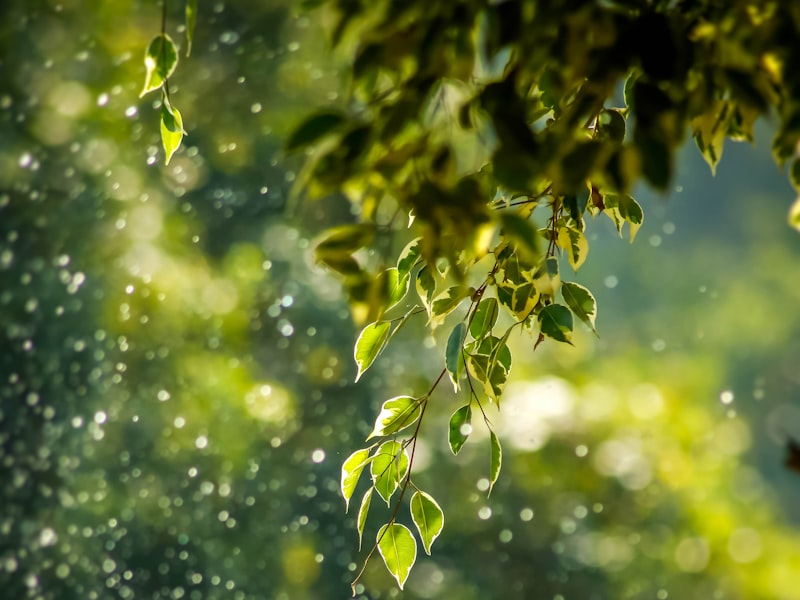Dust Bunny Rehab: From Vacuum Debris to Designer Decor
Dust Bunny Rehab: From Vacuum Debris to Designer Decor
We've all been there. You're dutifully vacuuming, and the dustbin fills with that familiar, fluffy mixture of… well, everything. Hair, lint, crumbs, the occasional rogue sequin – the dreaded dust bunny. But what if, instead of tossing this collection of debris, you could transform it into something beautiful? Believe it or not, dust bunnies, with a little creativity and elbow grease, can be upcycled into surprisingly chic and quirky home decor. This guide will show you how to turn trash into treasure, one dust bunny at a time.

Understanding Your Raw Material: The Anatomy of a Dust Bunny
Before you dive into crafting, it's essential to understand the composition of your dust bunnies. This will help you determine the best cleaning and treatment methods. Dust bunnies typically consist of:
- Fibers: Primarily hair (human and pet), lint from clothing and bedding, and textile fibers.
- Debris: Crumbs, dirt, dead skin cells, and other small particles.
- Miscellaneous: Depending on your household, this might include glitter, small toy parts, or even dried leaves.
Knowing what's in your dust bunnies allows you to tailor your cleaning process. For example, if you have pets, you might want to focus on removing excess hair before moving on to the creative stage. Consider wearing gloves and a mask when handling dust bunnies, especially if you have allergies.

Cleaning and Preparing Your Dust Bunnies
Hygiene first! Before transforming your dust bunnies into decor, thorough cleaning is crucial. This ensures your creations are not only visually appealing but also safe and sanitary. Here's a step-by-step guide:
- Initial Sorting: Remove any large or obviously non-dust bunny items like paper clips or large pieces of food.
- Washing: Place the dust bunnies in a mesh laundry bag or pillowcase. Wash on a gentle cycle with a mild detergent. You can add a tablespoon of white vinegar to help neutralize odors.
- Drying: Tumble dry on low heat or, preferably, air dry completely. Ensure the dust bunnies are completely dry to prevent mold or mildew growth.
- Fluffing: Once dry, gently fluff the dust bunnies to restore their volume. You can use a soft brush or your fingers.
For heavily soiled dust bunnies, you might need to repeat the washing process. Remember, the cleaner the starting material, the better the final product.

Dust Bunny Decor: Creative Upcycling Ideas
Now for the fun part! Here are a few ideas to spark your creativity and transform those humble dust bunnies into stunning decor pieces:
- Dust Bunny Garland: String together small, colorful dust bunnies to create a whimsical garland. You can dye the dust bunnies with fabric dye before stringing them for a more vibrant look.
- Dust Bunny Sculptures: Use wire or foam armatures to create small animal sculptures. Attach the dust bunnies to the armature with glue or thread.
- Dust Bunny Filled Ornaments: Fill clear glass or plastic ornaments with dyed dust bunnies for a unique and eye-catching holiday decoration.
- Textile Art: Use dust bunnies as a textural element in textile art or mixed-media projects.
Don't be afraid to experiment and let your imagination run wild! The key is to embrace the unique texture and character of the dust bunnies.

Dyeing and Customizing Your Dust Bunnies
Adding color can take your dust bunny creations to the next level. Fabric dye is an excellent choice for coloring dust bunnies. Here’s how:
- Prepare the Dye Bath: Follow the instructions on your fabric dye packaging. Use a stainless steel or enamel pot.
- Submerge the Dust Bunnies: Place the clean, dry dust bunnies in the dye bath.
- Simmer: Gently simmer the dust bunnies in the dye bath, stirring occasionally, for the recommended time.
- Rinse: Remove the dust bunnies and rinse them under cold water until the water runs clear.
- Dry: Dry the dyed dust bunnies as described in the cleaning section.
You can also use natural dyes like beetroot juice (for pink) or turmeric (for yellow) for a more eco-friendly approach. Experiment with different dyeing techniques, like tie-dyeing or ombre effects, to create unique patterns and textures.

Displaying Your Dust Bunny Creations
Once you've created your dust bunny masterpieces, it's time to showcase them! Consider these display ideas:
- Shelves and Mantels: Arrange dust bunny sculptures or ornaments on shelves or mantels for a touch of whimsy.
- Wall Art: Frame textile art pieces featuring dust bunnies and hang them on the wall.
- Centerpieces: Create a unique centerpiece for your dining table using a collection of dyed dust bunnies in a decorative bowl.
- Seasonal Decor: Incorporate dust bunny creations into your seasonal decor, such as Halloween or Christmas decorations.
Remember to consider the overall aesthetic of your home when displaying your dust bunny creations. The goal is to add a touch of personality and charm without overwhelming the space.

The Ethical and Environmental Considerations
Upcycling dust bunnies is not just a fun craft project; it's also an environmentally responsible choice. By repurposing what would otherwise be waste, you're reducing landfill waste and conserving resources. It also encourages a more mindful approach to consumption and waste management.
Furthermore, this quirky craft can spark conversations about sustainability and creative reuse. It's a fun way to demonstrate that beauty and value can be found in the most unexpected places. So, embrace the dust bunny, and let your creativity shine!

So go forth, embrace the fluff, and let your inner artist transform those dust bunnies into delightful decor!
-YourDad

Comments
Post a Comment